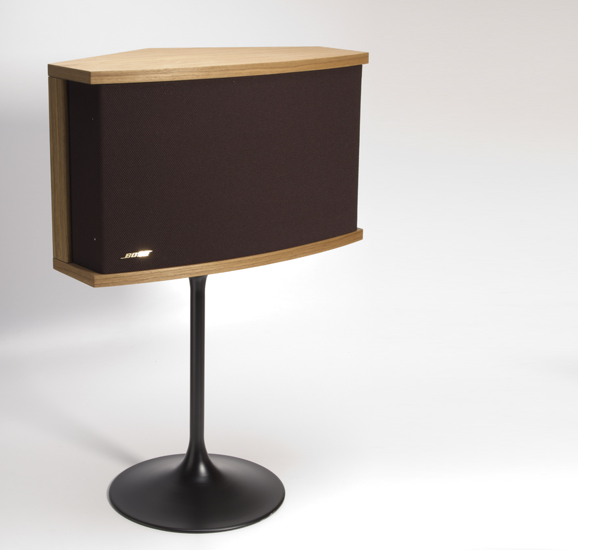
Part One
“No highs, no lows, it must be Bose.” And so the story goes in the wubbulous world of high-end audio. Other than using a green sharpie to get better CD sound, or that guy that calls you on the phone and osmotically makes your system sound better, no greater myth exists in audio today than that of the Bose 901 speakers. Much like Bigfoot, have you even seen a pair of Bose 901 speakers or, better yet, heard them?
Lately, I’ve had several positive encounters with Bose products. My Fiat 500 Sport has a Bose sound system, and yes, it possesses admirable bass extension (so there!) and a wide stereo image from the driver’s seat. I also experienced Bose on a recent trip home from Spain, where I sampled the new Burmester sound system in the latest Porsche 911 Cabriolet, and Porsche was kind enough to fly me home first class. The latter experience came with a pair of Bose Noise Canceling headphones (another product I’d never actually used, but about which I heard plenty of scuttlebutt). I must say, the noise-canceling effect works incredibly well; the first six episodes of “Californication – Season 5” flew by.
The ‘phones claimed decent sound quality and, compared to the little bit of ultimate fidelity they gave up to my $600 IEMs, were worth the noise-canceling effect. I’m thinking of investing in a pair before my next European trip. So that’s two strikes in Bose’s favor.
As TONEAudio is currently running a contest to identify the biggest audiophile myths, I began pondering: How do Bose 901s actually sound? My last memory of the speakers harkens back to a jazz club in my hometown of Milwaukee that actually had the speakers installed into the ceiling by their pedestal bases and powered by a Marantz 4300 quad receiver. Another area venue had their ceiling-mounted 901s powered by a large stack of McIntosh gear. Both systems were pleasant. Not to be outdone, another bar owner installed Magnepan MGIIs from the ceiling, which, coincidentally, ended up being destroyed by a ruckus started by the Milwaukee Rugby Club after a hearty victory. And so it goes.
Double Standards
Good memories aside, if you ask any audiophile, they will unequivocally tell you how much Bose speakers suck, and give you a million reasons why the speakers they own are much, much better. If you dig deep enough, chances are good at least one of these opinionated individuals owns either a pair of Rogers LS3/5as that don’t produce much bass or even a pair of smaller Magnepans. Sure, I love my Maggie 1.7s, but they don’t produce a lot of bass, either, and really need a lot of juice to give their best performance. And don’t even get me started on single-driver Lowthers. Been there, done that, too.
Now, to further the conversation, ask such expert audiophiles if they have actually heard a pair of contemporary 901s. Are you thinking mythbusting? Me too.
This multi-part article will be a standard review in the sense that we will listen to the Bose 901 speakers in a few different rooms and use a wide range of amplification— from a Pioneer SX-424 vintage receiver all the way up to a full stack of Audio Research Reference components—just as we would with any other speaker evaluation.
And conspiracy theorists, take note. I bought a random pair of 901s via the Web for retail price. I initially tried to contact Bose to see if we could get a review pair, but no one at the PR department would return my call. Hence, there will be less historical data accompanying the review, which is unfortunate, as the speaker is now on its sixth iteration of development and changed somewhat since its introduction in 1968.
Seeing that Bose is a $2 billion-per-year company, it’s doubtful any manufacturer other than perhaps Vandersteen or Magnepan has produced more quantities of a same speaker model. Unless we get a phone call, this will remain an unresolved question.
Service: Ambiguous to Excellent
A quick call to the Bose store at the local mall reveals that the 901s are “not a regular stock item.” But the sales person tried his hardest to switch me into a top-of-the-line Wave Radio, telling me “no one has big speakers in their home anymore.” He then acquiesced. If I must have a pair of 901s, I can special order them or go directly to the Web site. I do the latter, and about 90 seconds after getting to the home page, a pair of walnut 901s with pedestal bases is on its way. Six days later, the 901s arrive on my doorstep, safe and sound.
So far, so good. The speakers look to be in perfect shape and their fit and finish is excellent for $1,400. At the moment, Bose rates an A+. Next, the listening begins. Will the speakers fall off their pedestals? Stay tuned for Part Two.
Part Two
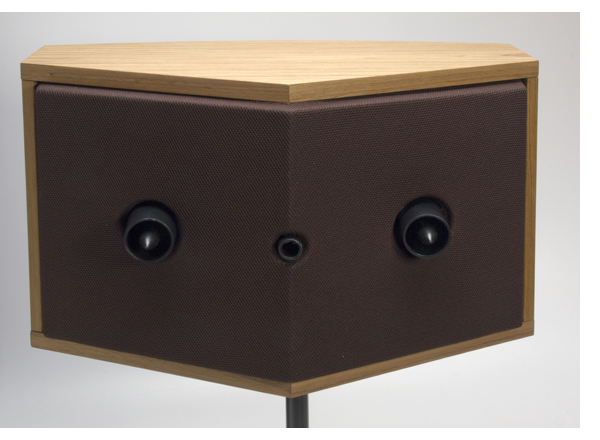
Setup and Installation
My pair of 901s is set up in the classic fashion on the cool, black metal pedestals that resemble something from the Herman Miller furniture catalog, circa 1960. An Eames lounge chair and an old copy Playboy is all that’s required for the full-on Austin Powers effect. Groovy, baby!
At 35 pounds each, the speakers are easy to manage. However, using them with the metal bases requires wood screws. While the holes are predrilled, you probably won’t utilize them more than a couple times without causing permanent damage to the speaker base. I can’t imagine a company as large as Bose wouldn’t be able to add threaded inserts without raising cost.
The binding posts allow for any kind of speaker cable. Yet if you are considering using your 901s with any kind of upgraded cable, don’t permanently attach the bases until you make a cable commitment. I employed Radio Shack’s 16-gauge speaker wire for the majority of listening sessions.
I used two systems to evaluate the speakers. The first consists of a vintage Pioneer SX-424 with a stock SL-1200 turntable/Grado Red cartridge and a third-generation iPod Classic, modded by Red Wine Audio. The second involves the Sooloos Music Server feeding Wadia’s new 121 decoding computer to the Unison Research S6 vacuum-tube amplifier. At the very end of the sessions, the Pass Labs XA200.5 monoblocks were employed to see just how loud the 901s could play.
Speaker Placement
Much like a pair of Klipschorns, the Bose 901 lends itself to corner placement. Because the majority of the drivers face rearward, placement is the key to fine-tuning the imaging performance.
Putting the speakers closer to room corners exaggerates the reflection and yields the overblown stereo image that perhaps contributed to the popular misinformation associated with Bose. If you are used to the sound of traditional box speakers, 901s—when tightly placed in room corners—sound much larger than life and boast an exaggerated soundstage. They feel like the remnants of a hallucinogenic experience. The 901s’ modest size encourages experimentation, which proves equally successful in my smaller 11 x 17-foot living room as well as in my 16 x 25-foot dedicated room.
My favorite listening position with the 901s seems counterintuitive albeit more traditional in an audiophile sense. Placed about eight feet apart, eight feet from a couch, and about five feet out into the listening room appeared perfect, and allowed the sound from the front-firing driver to anchor the presentation. Exactly like every panel speaker I’ve used in the room, the 901s were much more interesting on the long wall.
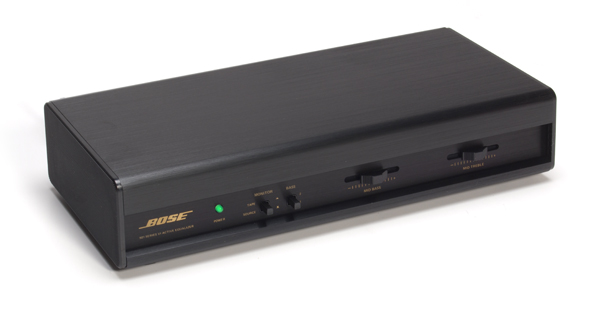 The EQ Box and The Moment of Truth
The EQ Box and The Moment of Truth
Because the Bose 901 makes use of nine full-range drivers, it takes advantage of an inline equalizer to make the speakers sound the way they are intended. Traditionalists, before you cry foul, think of the popularity of DSP-based speakers these days. Bose achieves a similar, if less sophisticated and considerably less-expensive effect with a passive EQ. The manual states the EQ can be used with series V 901s, but earlier models require the proper box.
If you are using a receiver, the EQ must be placed in a tape-monitor circuit, or between amp and preamp if you have separates. The supplied pair of three-foot RCA patch cords gets the ball rolling. The EQ features a two-position button: position one offering a flatter response, and position two adding a slight bass bump, not unlike the loudness button on a 70s receiver. Finally, there are two sliding controls for mid-bass and mid-treble, the latter claiming the most control over the overall tonal balance.
Slightly Rolled off Highs and Pretty Solid Bass
When set up like a conventional pair of smaller monitor speakers, the 901s produce a sound much like the original Magnepan MGIIs. Fortunately, audio pack rat and contributor Jerold O’Brien still has a mint pair of MGIIs to which I listened for direct comparison. Sure enough, they enjoy a softer, more relaxed high-frequency response, just like the 901s. The current MMG we reviewed possesses a bit more treble extension than the original MGIIs, but does not throw as large a soundfield. And, both Magnepan models need a ton of power to get up and go.
Where in semi-nearfield the 901s produce a wide soundstage, they also cast an excellent stereo image. A suite of Joni Mitchell tunes from Court and Spark, Hissing of Summer Lawns, and Don Juan’s Reckless Daughter captures her voice in the same approximate place as it’s found in my reference system. Sampling a wide range of solo vocalists reveals the importance of the mid-treble slider. Push too much for treble brightness and the vocals become grainy—not unlike when adjusting toe-in with a conventional speaker.
Thanks to their wide dispersion and massive soundstage, the 901s excel playing live-recorded music. Ted Nugent’s “My Love is Like a Tire Iron” from Intensities in Ten Cities equates to an impressive experience when cranked to brain-damage levels. Nugent’s band is spread-out between and beyond the speaker boundaries, and never diminishes in intensity when I get up off the couch to grab another beer. These speakers rock.
Those questioning the bass, look no further than the Stereophile test CD. 50hz tones were reproduced solidly, with plenty of energy on the 40hz track, though things dropped off pretty significantly beneath 40hz. A quick listen to a handful of bass heavy tracks from Pink Floyd, Genesis and Yello proved highly convincing and again, way more powerful than a number of small stand mounted speakers that I’m very familiar with.
Advantages of a Single Speaker Design
The essentially crossoverless design gives the 901 an unmistakable coherence, the model’s greatest strength. Its incredibly wide dispersion comes in a close second. The Bose 901s sound great anywhere in the room, and what you might give up in terms of ultra-focused, sweet-spot listening, you’ll gain in spades when you have a room full of people. These could very well be one of the world’s three or four best party speakers. Again, compromise: Would you like a pair of speakers that you just listen to in your listening chair for private sessions, or do you do most of your listening in secondary mode while hanging out in the house cooking and entertaining?
No doubt, some graininess sneaks into the midband because the EQ box isn’t chock full of Mundorf capacitors. That said, have you ever taken a peek at the crossover of your choice $1,400 speaker? Precious few include components sporting any better quality.
After extensive listening, the Bose 901s strike me as being damn good. They have some limitations, but don’t all $1,400 speakers? For that matter, what $10,000 speakers are perfect? I’ve heard a handful of speakers that check a couple more audiophile boxes than the 901s, but I’ve heard many more that sound much worse. Much as I hate audiophile clichés, the “sins of omission” has never been truer than with these speakers. They are so smooth and musical, it’s tough to freak out about the missing detail.
And that’s the area in which the 901 lacks: reproducing low-level detail and microdynamics. When the keyboard enters the first verse of Joni Mitchell’s “Trouble Child,” it’s subdued, as are the bongos at the beginning of “Jericho.” Again, I suspect information is lost in the EQ and through the stock cables. What the 901s sacrifice here, they make up for on a broader scale via the ability to play really loud and without strain.
The 901s cruise while being played at volumes well beyond those that would reduce mini monitors to rubble. Turning up Ace Frehley’s “Genghis Khan” from Anomaly at a level that hits 100 db peaks proves effortless.
Am I Nuts?
For those that think I’ve lost my marbles, I’ve played in every corner of the audiophile sandbox. Other than plasma tweeter designs, I’ve had my hands on almost everything over the past 35 years. Long-time TONEAudio readers know I have a soft spot for panel speakers (full range ESLs, in particular) and single-driver/SET systems. The 901s share many of the similarities that make enticing the latter types of speakers, and come with few of the limitations. Quad 57s are more beguiling through the midband, the MartinLogan speakers carry more extension at both ends of the frequency spectrum, and the Magepans lie somewhere in between. But they cost more and present greater challenges to a room and system.
Like any other “audiophile” speaker, the Bose 901 provides less-than-optimal results if setup is executed without care. I found the most lifelike sound came via a configuration slightly counterintuitive to that suggested by the manual.
The Bose 901s are equally highly musical and easy to listen to for hours without fatigue, characteristics many other speakers fail to deliver. Indeed, my audiophile buddies that I bribed into my listening room with IPAs are still shocked at just how good the 901s sound. As my wife likes to say, “What if Bigfoot is really a nice guy?” Consider this myth busted.
To make this conclusion as perfectly clear as possible and stave off any confusion: A handful of speakers in the $1,400 range reproduce music more accurately than the Bose 901. But—and like Pee Wee Herman likes to say, “Everyone has a big but”—the 901 gets the essence of the music right. The crossoverless design does a fantastic job with pace, which is what always draws me to single-driver and full-range electrostatic designs.
The ease with which it yields solid results makes the Bose 901 very attractive to both the normal music lover and budding audiophile. Mix the Bose 901s, a $150 vintage receiver, and an iPod, and you’ve created a rocking system. Add a better source and substitute a great tube integrated, and you’ll be shocked at the sheer musicality of the combination.
Yes, every speaker design involves compromise. Considering that this model is aimed more at the mass market than the audiophile, the 901s possess more than enough virtue to be considered an excellent value. They are certainly one of the most fun speakers I’ve had the pleasure to hear. Isn’t that what this is all supposed to be about?
The third and final installment to this trilogy will include listening results with alternate cable placement, changes to the reference system and speaker placement options. So forget all the folklore you’ve heard about the Bose 901s, these are serious speakers. I’m seriously considering keeping the review pair for my beach house – they will fit right in with the Eames Lounge chair and Noguchi table.
Part 3: Epilogue
After listening to the Bose 901s for a couple of weeks, I remain convinced they offer good value for the price and are incredibly user-friendly. But how do they respond to the usual tweaks applied by audiophile to practically every other speaker?
Premium Components
While the 901s offer a more diffuse soundfield than many speakers, they have enough resolution to tell the difference between a vintage or mass-market receiver—as well as more upscale units, though, at a certain point, the contrast becomes fruitless. For example, it’s very easy to note the variation between the Pioneer SX-424 and Cambridge 740 amplifier, as well as the distinction between tube and solid-state amplification.
Stepping up the cable quality from standard Radio Shack 16-gauge wire also pays dividends in upper-midrange clarity and high-frequency extension—both priorities. Swapping the 16-gauge wire for a $199 pair of AudioQuest Rocket 33 speaker cables, and the supplied RCA patch cords for two pairs of $39 AudioQuest Copperhead interconnects, brings greater focus to the overall presentation.
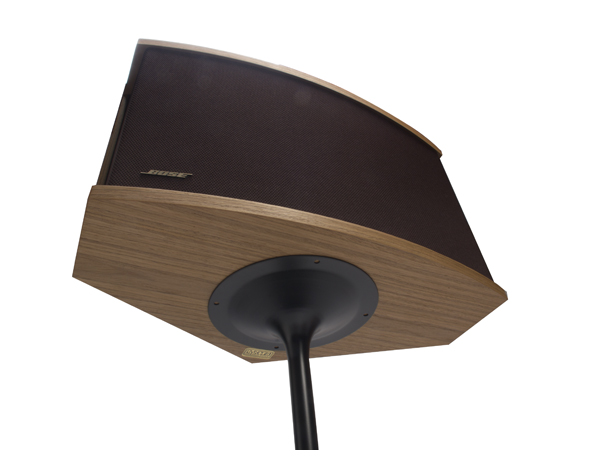 Ah, the Pedestals
Ah, the Pedestals
Even if the Bose 901s do not use a tweeter, per se, it’s to your advantage to get them up higher for critical listening than the height provided by the standard 18-inch pedestals; the manual specifies 18-36 inches as optimal. Again, just as a traditional speaker benefits, the 901s profit from solid speaker stands that are spiked at the bottom.
A few spots of blu-tack between the speakers and a pair of 24-inch Sound Anchor stands up the game, yielding tighter and more resolute bass response as well as a greater sense of pinpoint imaging across the soundstage. The Sound Anchor stands also make it much easier to take advantage of upgraded speaker cable, as it must travel down the center of the Bose pedestals. Those planning on using audiophile-vetted cable will have to get handy with a large drill bit to modify the stands. There’s no way you can pair Nordost Odin speaker cable with the 901s and the stock pedestal stands. Don’t even think about it.
Backwards Listening
A number of Bose enthusiasts enjoy listening to 901s “in reverse,” allowing the eight drivers mounted on the rear of the cabinet to face the listening position. My spirit of investigation encouraged this tact, but it was not my favorite position. There’s slightly more HF extension, but the big, expansive soundfield that makes the speaker so enticing simply disappears.
Final Thoughts
That’s my adventure with the Bose 901. These speakers have been a blast to listen to with every kind of music. While they yield decent performance with a low-budget receiver, they are worthy of journeyman-level components and a modest cable upgrade. Advanced hobbyists could probably uncover even more performance by modding the EQ’s passive components, but doing so is well beyond the scope of this review and definitely voids the warranty.
Bigfoot may still be lurking in the shadows (the rumor suggests he is in upstate Washington somewhere near the Canadian border), but the Bose 901 speakers are only a couple of mouse clicks away. Do it.
www.bose.com




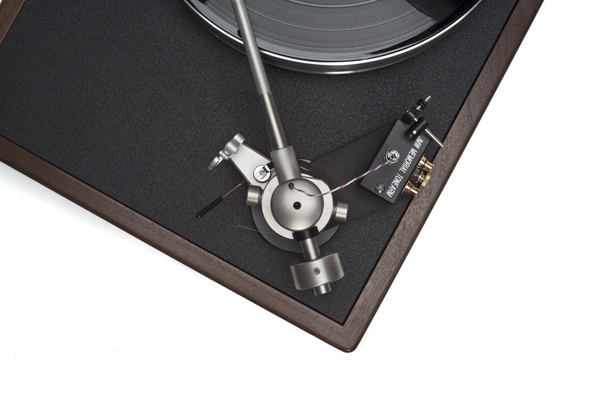 An output pod with RCA jacks and a grounding terminal lurk at the rear corner of the plinth. There’s a quick-release connector, meaning tonearm wands are easily interchanged and cartridges effortlessly swapped. And since Lyra’s Kleos and Kleos mono cartridges possess identical bodies and parameters, the switch between stereo to mono is a snap.
An output pod with RCA jacks and a grounding terminal lurk at the rear corner of the plinth. There’s a quick-release connector, meaning tonearm wands are easily interchanged and cartridges effortlessly swapped. And since Lyra’s Kleos and Kleos mono cartridges possess identical bodies and parameters, the switch between stereo to mono is a snap. Playing through the new Audio Research REF Phono 2 SE, the Classic 1 ably cruises through recent Music Matters Blue Note remasters. Comparing the playback on “Scrapple From the Apple” (From Dexter Gordon’s Our Man In Paris) between the Classic 1 fitted with the Kleos cartridge to Lyra’s flagship mounted to my reference AVID Acutus Reference SP with TriPlanar arm reveals the Classic 1’s ability to cover the basics—rhythmically and dynamically. Of course, the AVID/TP combination offers a larger dynamic swing, but the Classic 1 always captures the essence of the performance, with Dexter Gordon’s tenor sax escaping out into the room in a manner it doesn’t via lesser turntables.
Playing through the new Audio Research REF Phono 2 SE, the Classic 1 ably cruises through recent Music Matters Blue Note remasters. Comparing the playback on “Scrapple From the Apple” (From Dexter Gordon’s Our Man In Paris) between the Classic 1 fitted with the Kleos cartridge to Lyra’s flagship mounted to my reference AVID Acutus Reference SP with TriPlanar arm reveals the Classic 1’s ability to cover the basics—rhythmically and dynamically. Of course, the AVID/TP combination offers a larger dynamic swing, but the Classic 1 always captures the essence of the performance, with Dexter Gordon’s tenor sax escaping out into the room in a manner it doesn’t via lesser turntables.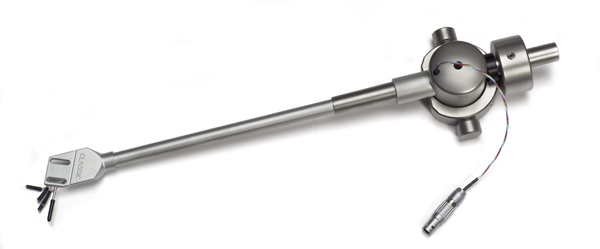 Which Model?
Which Model?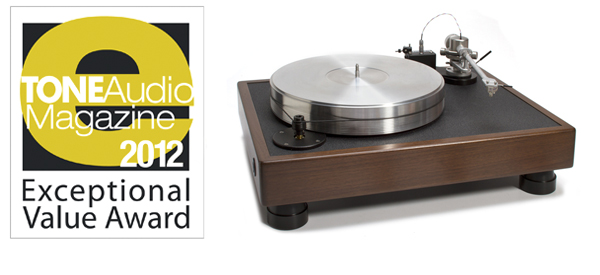 VPI Classic 1 Turntable
VPI Classic 1 Turntable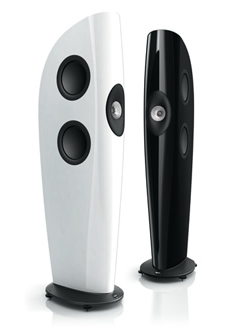
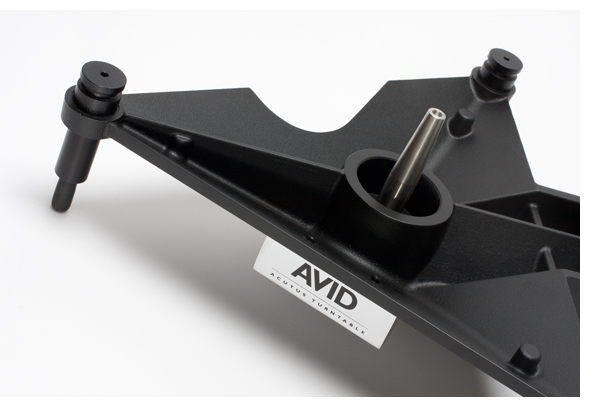 Everything is Jelly
Everything is Jelly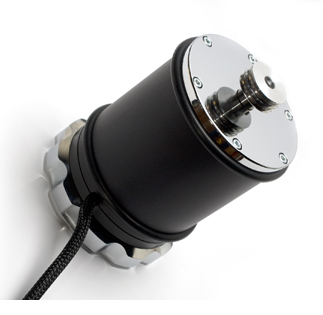 The Opposite Approach
The Opposite Approach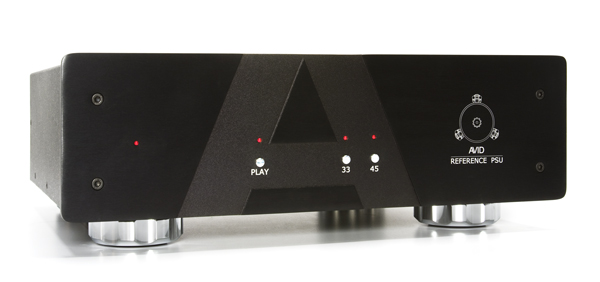 The last bit of setup involves fine-tuning the suspension and placing the chassis onto a level surface. Once the subchassis is leveled with the supplied tool, the suspension is perfectly tuned to the proper frequency. The final act involves fitting the three O-rings to the suspension towers and attaching the two drive belts, the only tough part of the entire process. First, pause in order to focus your concentration. Fortunately, my chi was in perfect order. I slipped the belts on just right on my first attempt.
The last bit of setup involves fine-tuning the suspension and placing the chassis onto a level surface. Once the subchassis is leveled with the supplied tool, the suspension is perfectly tuned to the proper frequency. The final act involves fitting the three O-rings to the suspension towers and attaching the two drive belts, the only tough part of the entire process. First, pause in order to focus your concentration. Fortunately, my chi was in perfect order. I slipped the belts on just right on my first attempt.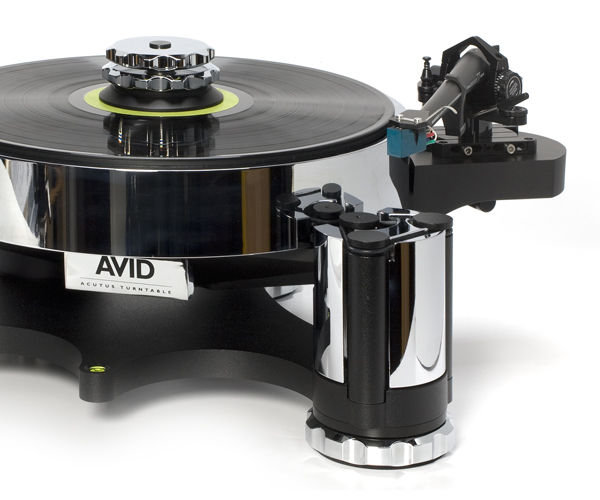 Listening and Comparisons
Listening and Comparisons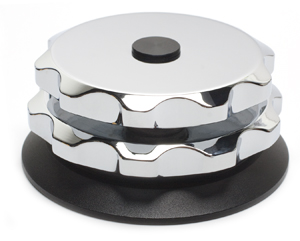 Experiencing acoustic material proved equally great. Listening to Analogue Productions’ recently remastered Bill Evans The Riverside Recordings box set approximated sonic nirvana. “Polka Dots and Moonbeams,” from Moonbeams, starts gently. The ultra-low noise floor of the Ref SP brought the music up out of what seemed like nowhere; the tonality of the piano epitomized perfection. At the beginning of Rachmaninoff’s Piano Concerto No.1 in F sharp minor, Op. 1, the horns jumped right out of the soundstage in a way that they never have done in my system. Thanks to the additional dynamic range, the overall presentation felt louder since quiet passages were now significantly quieter.
Experiencing acoustic material proved equally great. Listening to Analogue Productions’ recently remastered Bill Evans The Riverside Recordings box set approximated sonic nirvana. “Polka Dots and Moonbeams,” from Moonbeams, starts gently. The ultra-low noise floor of the Ref SP brought the music up out of what seemed like nowhere; the tonality of the piano epitomized perfection. At the beginning of Rachmaninoff’s Piano Concerto No.1 in F sharp minor, Op. 1, the horns jumped right out of the soundstage in a way that they never have done in my system. Thanks to the additional dynamic range, the overall presentation felt louder since quiet passages were now significantly quieter.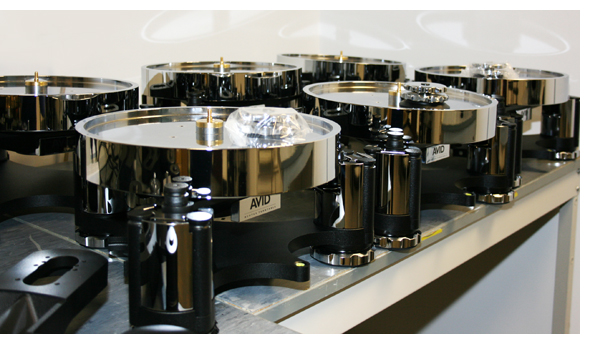 The Rabbit is in Hand
The Rabbit is in Hand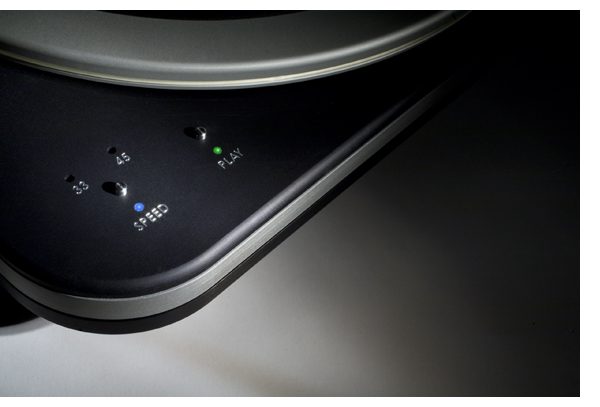 Every surface on the SG-2 is beautifully finished, and as far as tables go, I put it up on par with the SME’s in terms of build quality and understated excellence. The Continuum is a Dodge Challenger with a blower sticking out of the hood, jacked up with tires about three sizes too big sticking out of the wheel wells, while the SG-2 is an Audi S8 — elegant, understated and much more capable the minute you get into the first turn. Should you be someone who wants a turntable based on the high zoot factor, the SG-2 may not be for you. But if your primary measuring stick is musical performance, and timeless style like an Eames Chair, read on.
Every surface on the SG-2 is beautifully finished, and as far as tables go, I put it up on par with the SME’s in terms of build quality and understated excellence. The Continuum is a Dodge Challenger with a blower sticking out of the hood, jacked up with tires about three sizes too big sticking out of the wheel wells, while the SG-2 is an Audi S8 — elegant, understated and much more capable the minute you get into the first turn. Should you be someone who wants a turntable based on the high zoot factor, the SG-2 may not be for you. But if your primary measuring stick is musical performance, and timeless style like an Eames Chair, read on.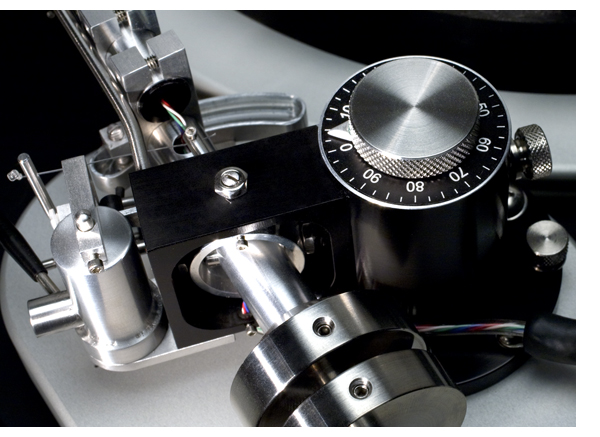 If you have some records of varying thickness, the Tri-Planar is quite handy, with its large dial indicator on the back of the arm. You can find settings for 140, 180 and 200-gram records, with a little practice, and then return to those settings when you play those records again. Or, if you are like me, you can just set the arm up for whatever you have the most of and go from there. I’m of the mind that constant fiddling is bad for the cartridge suspension, and as I seem to get long life out of my cartridges, I might be on to something. The good news is that with the Tri-Planar, you can have it your way.
If you have some records of varying thickness, the Tri-Planar is quite handy, with its large dial indicator on the back of the arm. You can find settings for 140, 180 and 200-gram records, with a little practice, and then return to those settings when you play those records again. Or, if you are like me, you can just set the arm up for whatever you have the most of and go from there. I’m of the mind that constant fiddling is bad for the cartridge suspension, and as I seem to get long life out of my cartridges, I might be on to something. The good news is that with the Tri-Planar, you can have it your way.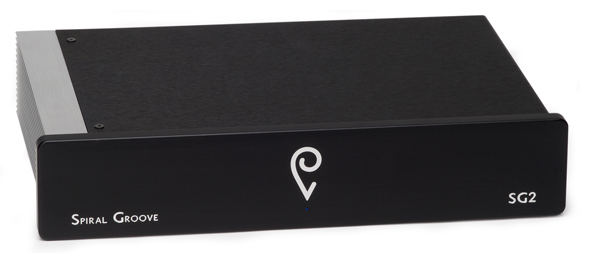 This is what analog is all about folks
This is what analog is all about folks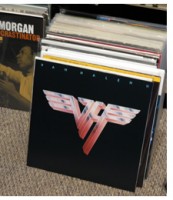 Keeping it real
Keeping it real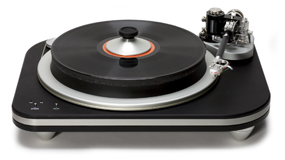
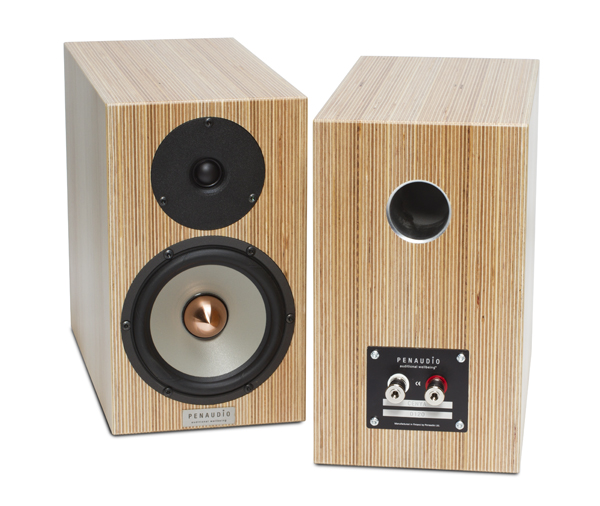 Reporting on the Porsche/Burmester event for Issue 46’s cover story put me at a dinner table with a new group of writers. Instead of the usual cronies from high-end audio, I encountered a pack of automotive journalists. A staff member from Automobile magazine commented that, on a recent outing with a handful of incredibly wealthy car collectors, he asked everyone the same question: What is the most fun car you own? He became fascinated to discover that, even though the owners all possess stables of exotic machinery, five of the six respondents named the Mini Cooper S Convertible.
Reporting on the Porsche/Burmester event for Issue 46’s cover story put me at a dinner table with a new group of writers. Instead of the usual cronies from high-end audio, I encountered a pack of automotive journalists. A staff member from Automobile magazine commented that, on a recent outing with a handful of incredibly wealthy car collectors, he asked everyone the same question: What is the most fun car you own? He became fascinated to discover that, even though the owners all possess stables of exotic machinery, five of the six respondents named the Mini Cooper S Convertible.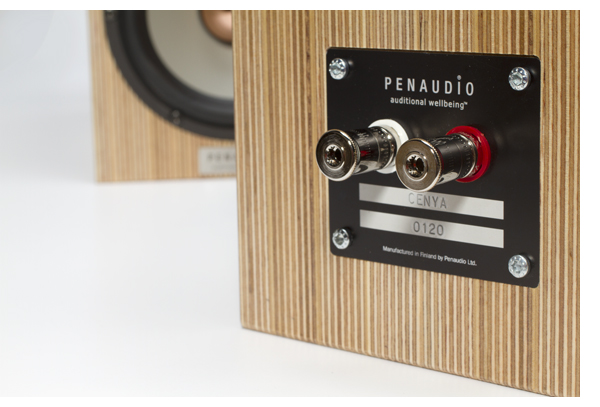 Mighty Mids
Mighty Mids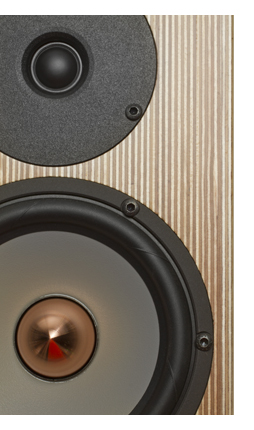 Penaudio Cenya Loudspeaker
Penaudio Cenya Loudspeaker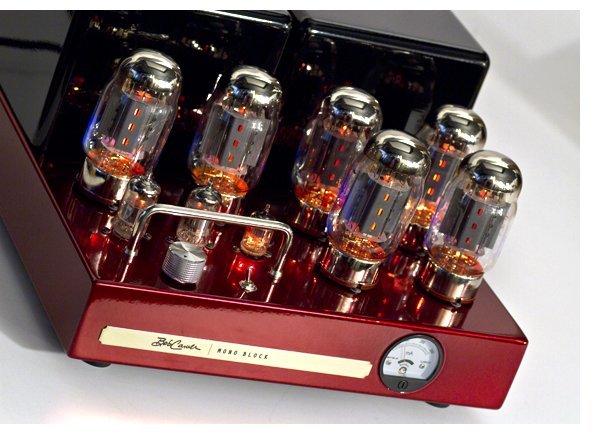 Throughout his career, Bob Carver has made several legendary products and, like most great artists, stirred up controversy in the process. His new line of tube amplifiers aren’t just brilliant, they’re reasonably priced. For those wanting the “Made in America” badge, these crimson beauties—along with every other Carver amplifier—are built by hand in Lexington, using point-to-point wiring techniques.
Throughout his career, Bob Carver has made several legendary products and, like most great artists, stirred up controversy in the process. His new line of tube amplifiers aren’t just brilliant, they’re reasonably priced. For those wanting the “Made in America” badge, these crimson beauties—along with every other Carver amplifier—are built by hand in Lexington, using point-to-point wiring techniques.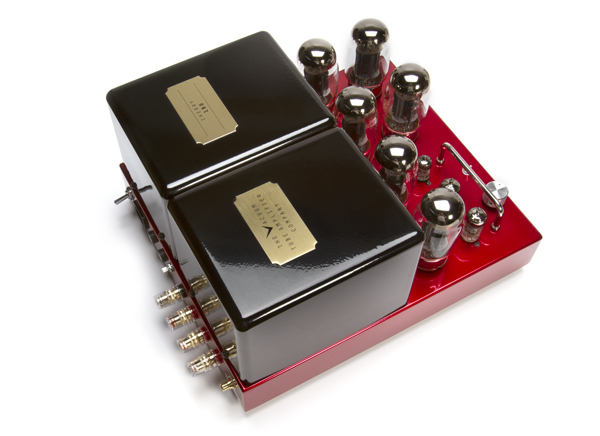 The Whole Enchilada
The Whole Enchilada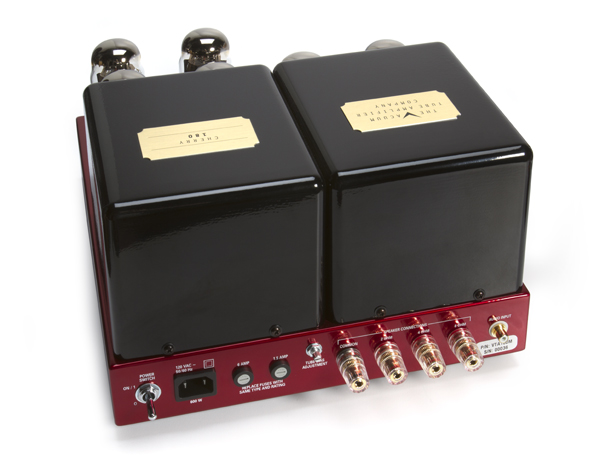 Award Winning Performance
Award Winning Performance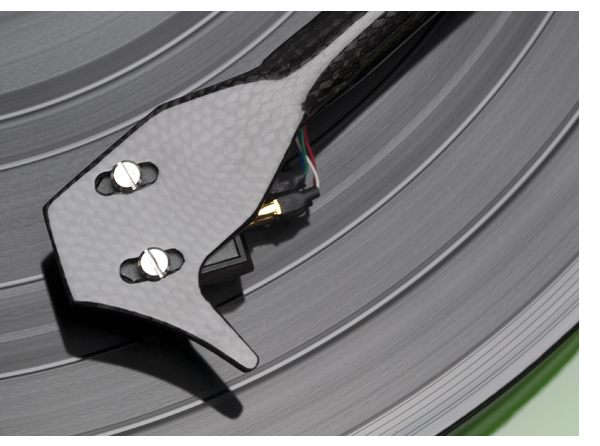 Back in the Batcave
Back in the Batcave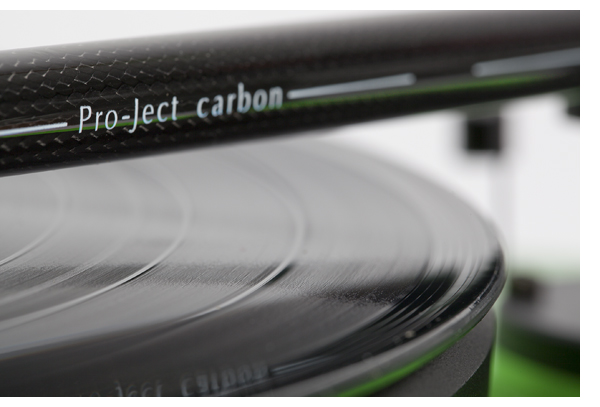 No Excuse Not To Spin
No Excuse Not To Spin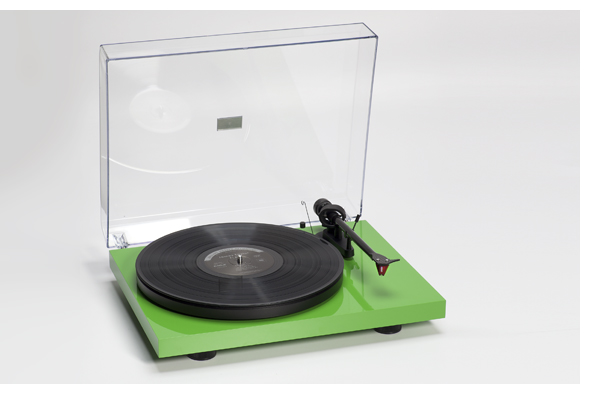 Pro-Ject Debut Carbon Turntable
Pro-Ject Debut Carbon Turntable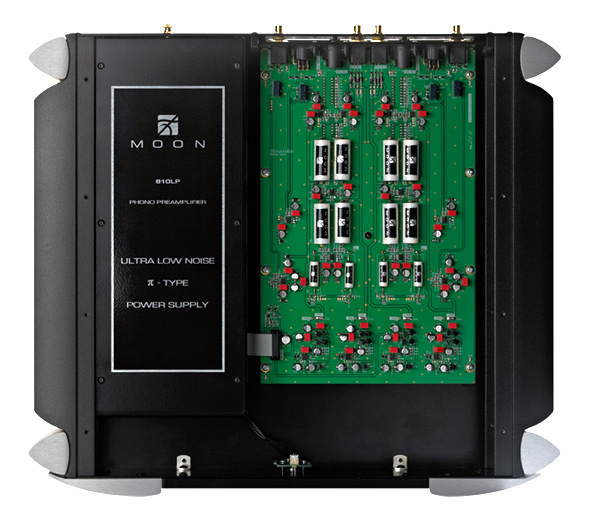 The overhead view reveals a fully discrete design with a massive, shielded power supply. All business here, folks. (inside photo courtesy of Simaudio)
The overhead view reveals a fully discrete design with a massive, shielded power supply. All business here, folks. (inside photo courtesy of Simaudio)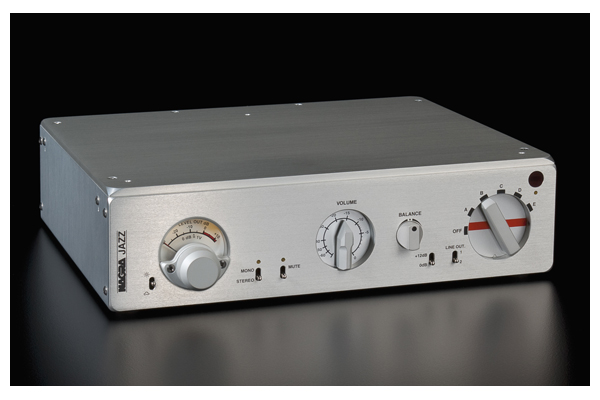 Nagra announced yesterday that they are introducing their new Jazz preamplifier here at the Munich Hi End Show. Named in homage to the legendary Montreux Jazz Festival that Nagra has sponsored for years, the Jazz preamplifier follows in the line of the famous PL-L and PL-P preamplifiers.
Nagra announced yesterday that they are introducing their new Jazz preamplifier here at the Munich Hi End Show. Named in homage to the legendary Montreux Jazz Festival that Nagra has sponsored for years, the Jazz preamplifier follows in the line of the famous PL-L and PL-P preamplifiers.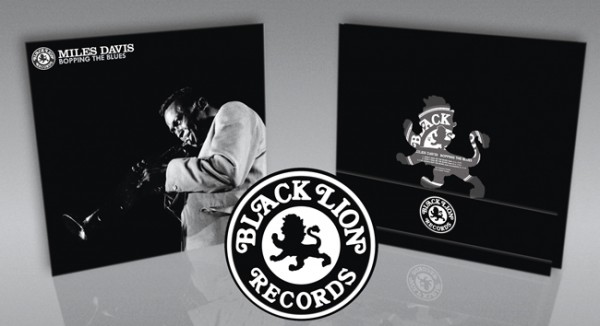

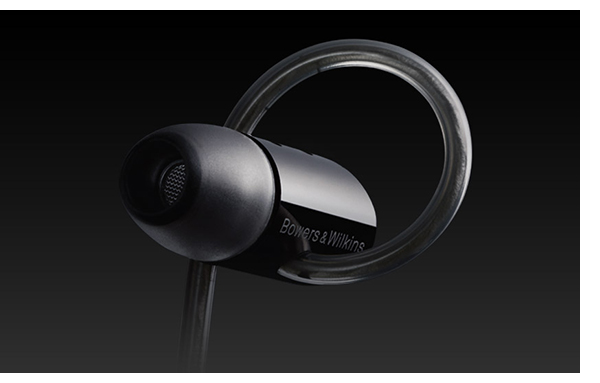 The iPod is often a bright spot for those that commute via mass transit. When the London Tube was part of my daily regimen, it seemed everyone wore headphones. However, bulky, noise-canceling ‘phones feel like winter earmuffs in the summer; too hot and sweaty for my taste. And yet, swapping them for in-ear phones always presented too much of a sonic compromise. That is, until I experienced the B&W C5s.
The iPod is often a bright spot for those that commute via mass transit. When the London Tube was part of my daily regimen, it seemed everyone wore headphones. However, bulky, noise-canceling ‘phones feel like winter earmuffs in the summer; too hot and sweaty for my taste. And yet, swapping them for in-ear phones always presented too much of a sonic compromise. That is, until I experienced the B&W C5s.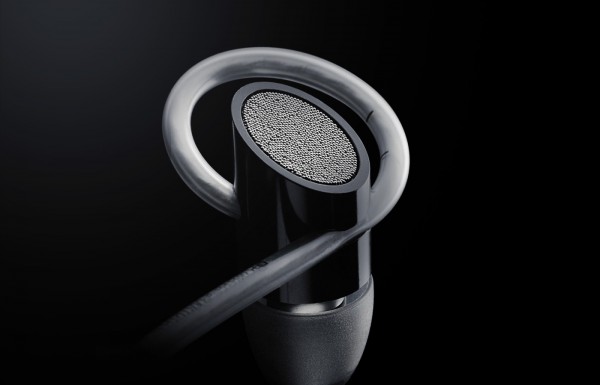 Build quality is excellent. The aluminum casing is high quality, and the gloss-black finish adds a sexy look. While they haven’t any active noise-canceling technology, the supplied earpieces do an adequate job of keeping out ambient noise. Bowers & Wilkins also included an Apple-approved cable with its own volume control. It even contains a microphone so you can make phone calls.
Build quality is excellent. The aluminum casing is high quality, and the gloss-black finish adds a sexy look. While they haven’t any active noise-canceling technology, the supplied earpieces do an adequate job of keeping out ambient noise. Bowers & Wilkins also included an Apple-approved cable with its own volume control. It even contains a microphone so you can make phone calls.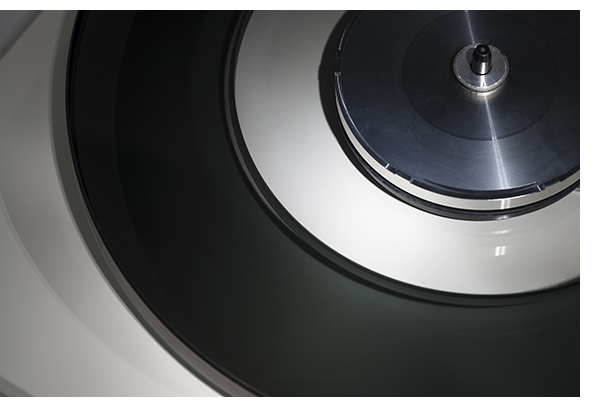 While the RP6 uses the same double-brace technology, making for a more rigid mechanical connection between the tonearm base and main-bearing housing, the subplatter cap is now machined—as opposed to the all-plastic part on the RP3. This process gives Rega’s new platter a perfectly flat surface on which to rest, again making for a better physical connection between record surface and platter. The platter features two pieces of glass that are bonded together with a UV cured glue instead of the single piece that Rega has used for years and is very labor intensive to produce. The second piece is a ring, adding more mass at the outside of the spinning platter where it will do the most good. Very clever.
While the RP6 uses the same double-brace technology, making for a more rigid mechanical connection between the tonearm base and main-bearing housing, the subplatter cap is now machined—as opposed to the all-plastic part on the RP3. This process gives Rega’s new platter a perfectly flat surface on which to rest, again making for a better physical connection between record surface and platter. The platter features two pieces of glass that are bonded together with a UV cured glue instead of the single piece that Rega has used for years and is very labor intensive to produce. The second piece is a ring, adding more mass at the outside of the spinning platter where it will do the most good. Very clever.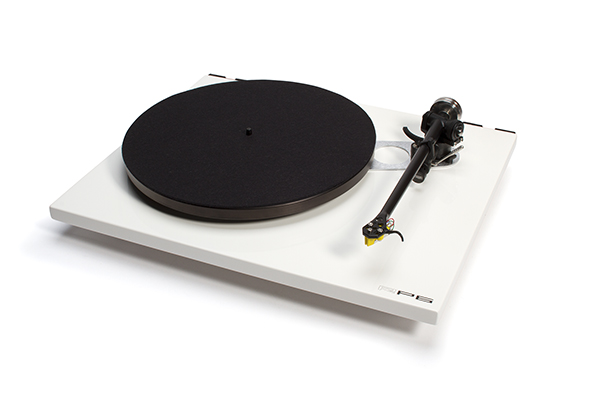 Rega RP6 Turntable
Rega RP6 Turntable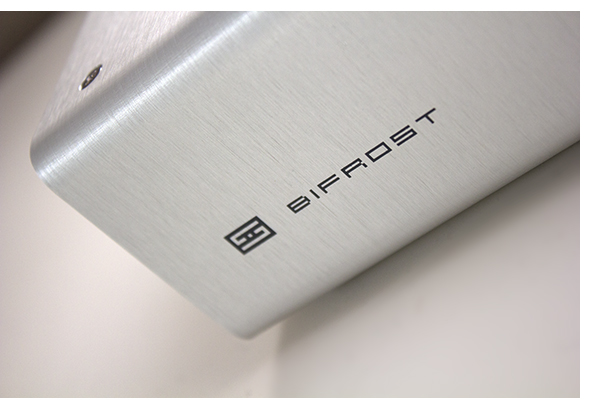
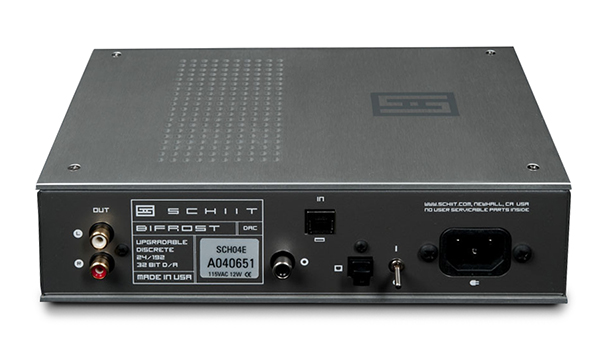 Schiit’s presentation also shows more connective tissue than the NFB-2.1; there are fewer spatial cues. If this DAC stand-off took place in the amplifier space, the Schiit would likely represent a tubular faction. Greater congeal means more forgiveness of poorer recordings and greater overall body. The thick synth lines underpinning Phones’ remix of The Rakes’ “Retreat” impact with more squelch than via the Chinese entry. The two units are pretty much matched for detail retrieval, with the Audio-gd stealing the lead with ambient decay.
Schiit’s presentation also shows more connective tissue than the NFB-2.1; there are fewer spatial cues. If this DAC stand-off took place in the amplifier space, the Schiit would likely represent a tubular faction. Greater congeal means more forgiveness of poorer recordings and greater overall body. The thick synth lines underpinning Phones’ remix of The Rakes’ “Retreat” impact with more squelch than via the Chinese entry. The two units are pretty much matched for detail retrieval, with the Audio-gd stealing the lead with ambient decay.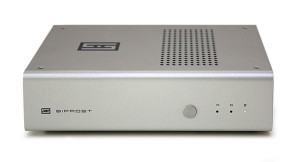 The Schiit Bifrost DAC
The Schiit Bifrost DAC

 The EQ Box and The Moment of Truth
The EQ Box and The Moment of Truth Ah, the Pedestals
Ah, the Pedestals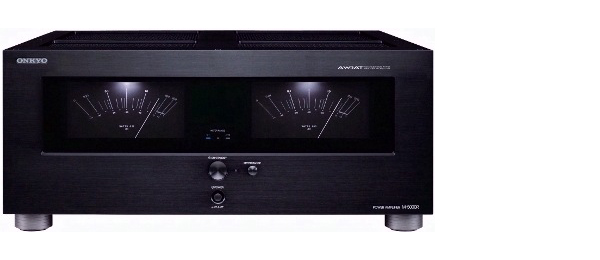 Legendary manufacturer Onkyo is now shipping their latest Reference components, comprised of the M-5000R power amplifier (remember those cool power meters from the 70’s? They’re back!) featuring 150 watts per channel, the C-7000R CD player and the P-3000R Preamplifier that features an on-board DAC and phono stage. The M-5000R has an MSRP of $2,699, the C-7000R, $1,699 and the P-3000R, $1,899.
Legendary manufacturer Onkyo is now shipping their latest Reference components, comprised of the M-5000R power amplifier (remember those cool power meters from the 70’s? They’re back!) featuring 150 watts per channel, the C-7000R CD player and the P-3000R Preamplifier that features an on-board DAC and phono stage. The M-5000R has an MSRP of $2,699, the C-7000R, $1,699 and the P-3000R, $1,899.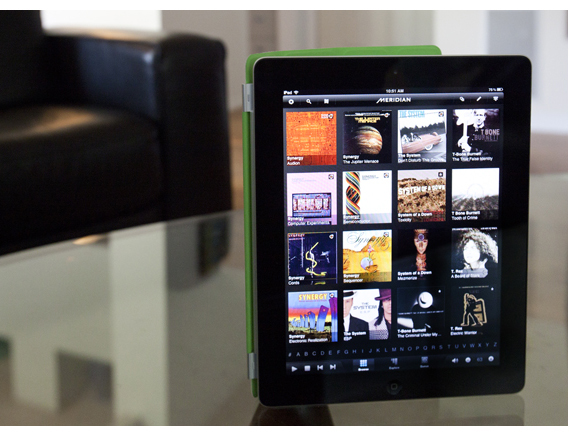 Imagine controlling ten our even twenty thousand full-resolution albums from your iPad while basking in the comfort of a cozy couch or listening chair. Meridian’s new Media Core App for the renowned Sooloos music server makes it possible. If you’ve played with a Sooloos at a hi-fi show or a local dealer, you know the effortlessness with which a Sooloos presents a large music collection. And if you are a current Sooloos owner, you’ve been dreaming about this marriage since the minute you unpacked your iPad.
Imagine controlling ten our even twenty thousand full-resolution albums from your iPad while basking in the comfort of a cozy couch or listening chair. Meridian’s new Media Core App for the renowned Sooloos music server makes it possible. If you’ve played with a Sooloos at a hi-fi show or a local dealer, you know the effortlessness with which a Sooloos presents a large music collection. And if you are a current Sooloos owner, you’ve been dreaming about this marriage since the minute you unpacked your iPad.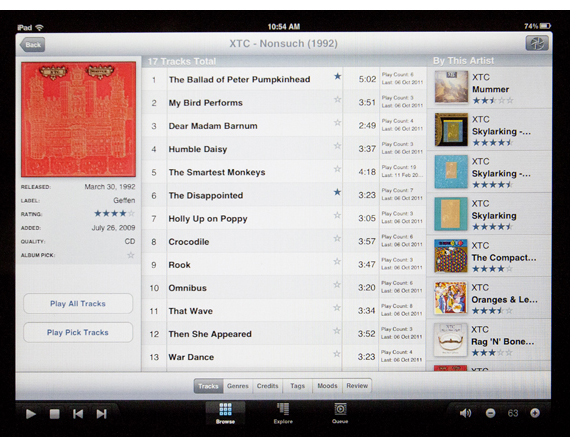 The cost of a complete system will be a barrier to entry for some, as the Control 15 core (which is essentially a complete Windows PC with an integral touch screen and Smartlink output and has 500 gb of internal storage that still requires external backup) has an MSRP of $8,500. Those with larger music collections need only add the Media Drive 600, which can be configured to contain about 7500 albums with backup.
The cost of a complete system will be a barrier to entry for some, as the Control 15 core (which is essentially a complete Windows PC with an integral touch screen and Smartlink output and has 500 gb of internal storage that still requires external backup) has an MSRP of $8,500. Those with larger music collections need only add the Media Drive 600, which can be configured to contain about 7500 albums with backup.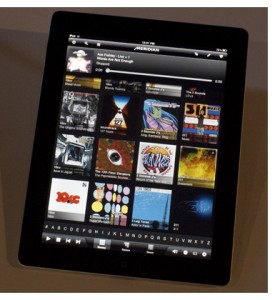 Other favorite Sooloos features are there as well, focus and swim functions also allow you to concentrate on a particular artist, mood, or genre, taking random play to another level completely. Want to just listen to 60’s blues, old school rap or string quartets? Piece of cake, and no other music software allows this amount of control.
Other favorite Sooloos features are there as well, focus and swim functions also allow you to concentrate on a particular artist, mood, or genre, taking random play to another level completely. Want to just listen to 60’s blues, old school rap or string quartets? Piece of cake, and no other music software allows this amount of control.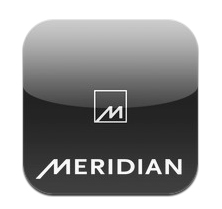 The app is free now at the Apple App Store, but you will need a Meridian Music Server to take advantage of it.
The app is free now at the Apple App Store, but you will need a Meridian Music Server to take advantage of it.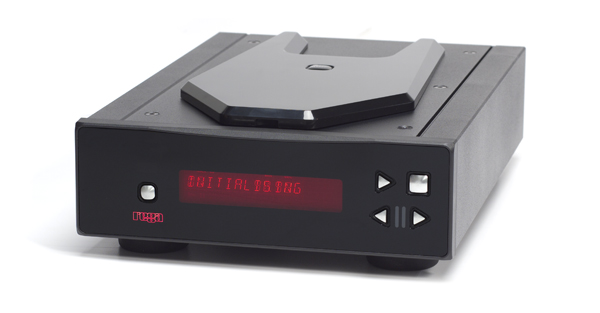 Rega’s Apollo-R smokes the dCS Paganini. Okay, it’s not that awesome, but I got your attention, no? In all seriousness, the Apollo-R is a damn fine CD player. Even as computer audio continues to be all the rage, many people still enjoy dropping a CD into a transport and pushing “Play.” Rega is one reason why they do.
Rega’s Apollo-R smokes the dCS Paganini. Okay, it’s not that awesome, but I got your attention, no? In all seriousness, the Apollo-R is a damn fine CD player. Even as computer audio continues to be all the rage, many people still enjoy dropping a CD into a transport and pushing “Play.” Rega is one reason why they do.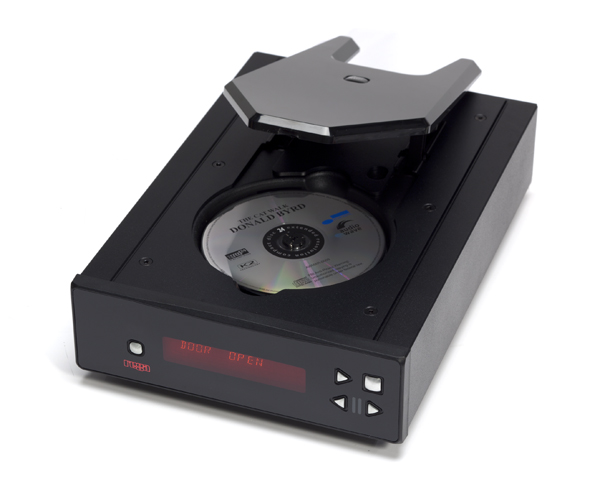 In Service of the Music
In Service of the Music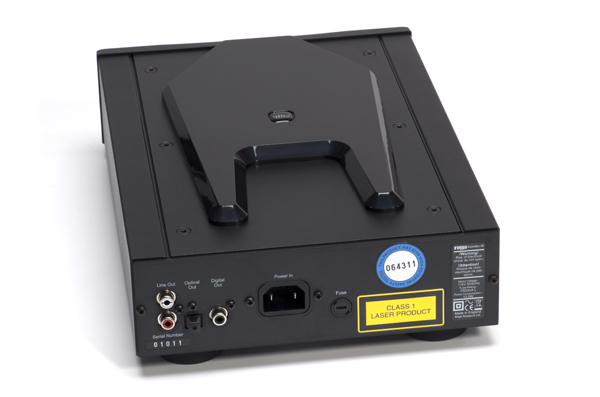 Tonality to Spare
Tonality to Spare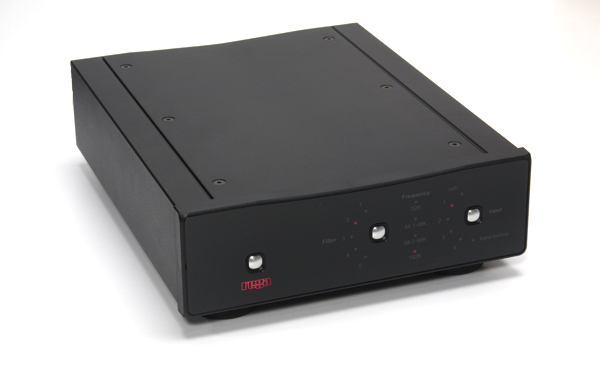 To DAC or Not to DAC
To DAC or Not to DAC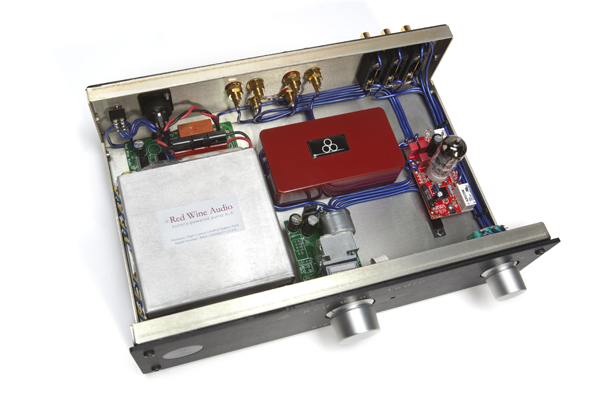 Proof is in the Pudding
Proof is in the Pudding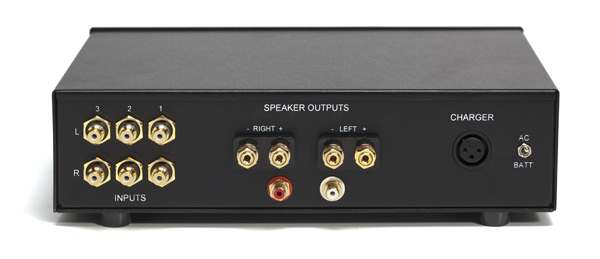 More of What You Need…And None of What You Don’t
More of What You Need…And None of What You Don’t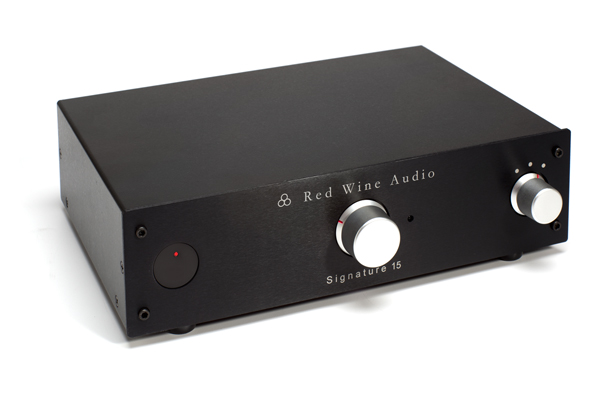 Red Wine Audio Signature 15 Integrated Amplifier
Red Wine Audio Signature 15 Integrated Amplifier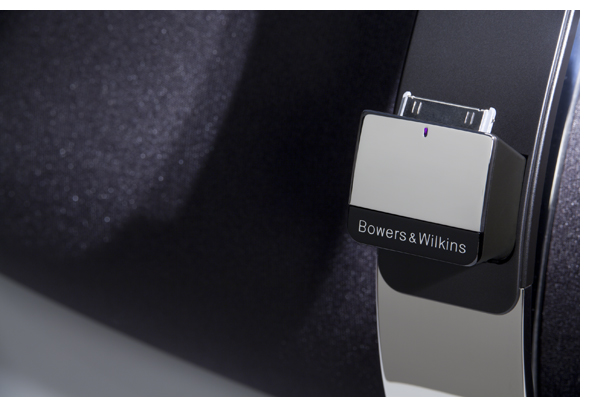
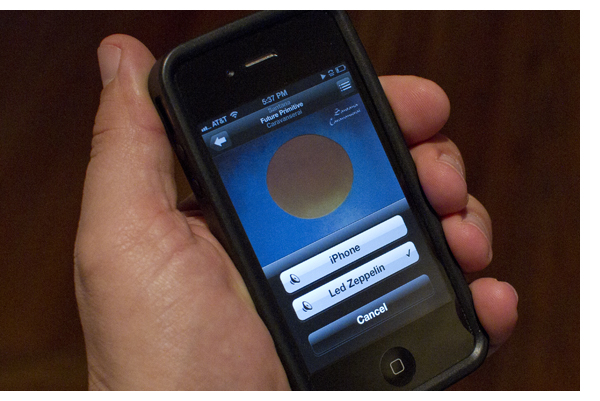 While our original Zeppelin survived teenager torture for four years, everyone sighed a huge sigh of relief thanks to AirPlay, knowing there would be no more rough and tumble with the dock. The wireless connectivity also makes for a ton of fun when friends visit – now everyone can play their music through the Zeppelin Air.
While our original Zeppelin survived teenager torture for four years, everyone sighed a huge sigh of relief thanks to AirPlay, knowing there would be no more rough and tumble with the dock. The wireless connectivity also makes for a ton of fun when friends visit – now everyone can play their music through the Zeppelin Air.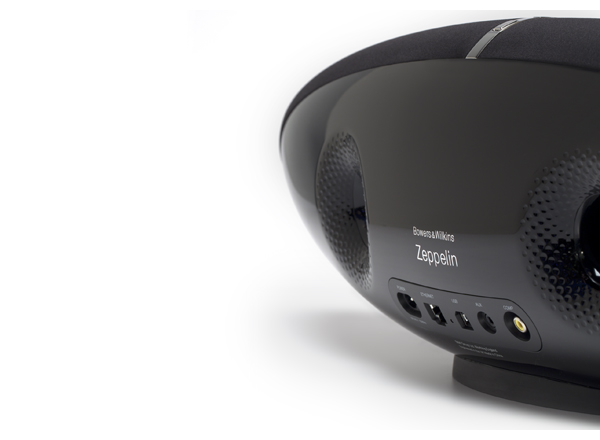 Horsepower without finesse is uninteresting (or perhaps a Dodge Viper) and again the Zeppelin Air glides through effortlessly. The piano solo on Bowie’s “Aladdin Sane” from the self titled album was brilliant and hung in the air well in front of the speakers possessing exceptional timbral accuracy. Whatever secrets lurk in the DSP processing, the engineers in charge should get a pay raise. If I only had $600 to spend on a system, I wouldn’t even bother with separates. Those in a compact space will find that the Zeppelin Air makes a great addition to your flat screen TV for a lot less than any number of soundbars now available.
Horsepower without finesse is uninteresting (or perhaps a Dodge Viper) and again the Zeppelin Air glides through effortlessly. The piano solo on Bowie’s “Aladdin Sane” from the self titled album was brilliant and hung in the air well in front of the speakers possessing exceptional timbral accuracy. Whatever secrets lurk in the DSP processing, the engineers in charge should get a pay raise. If I only had $600 to spend on a system, I wouldn’t even bother with separates. Those in a compact space will find that the Zeppelin Air makes a great addition to your flat screen TV for a lot less than any number of soundbars now available.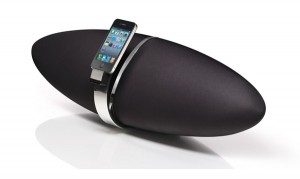 The B&W Zeppelin Air
The B&W Zeppelin Air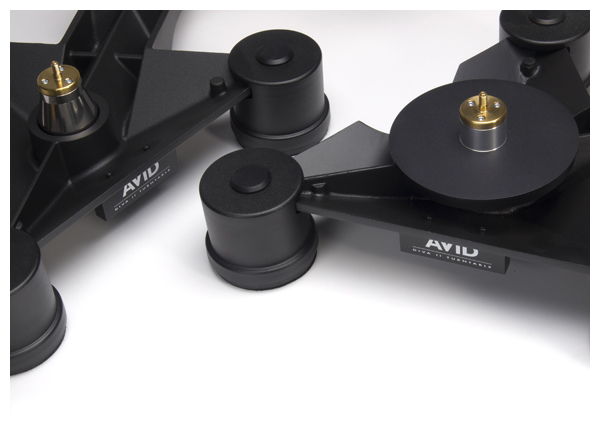 Techie Bits
Techie Bits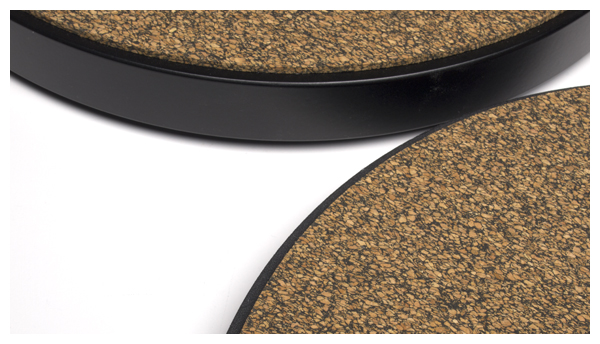
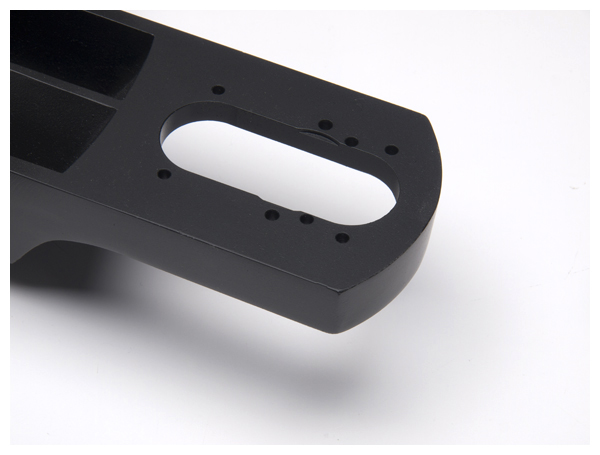 However, most popular arms (Rega, TriPlanar, Dynavector, and others) can be accommodated with an adaptor plate available from AVID dealers. Comparison listening between the Diva II and II SP came courtesy of identical SME 309 tonearms, each fitted with Dynavector DV20x2L phono cartridges and Furutech ag12 tonearm cables. Feickert Analogue’s Adjust + software assured identical performance from both setups.
However, most popular arms (Rega, TriPlanar, Dynavector, and others) can be accommodated with an adaptor plate available from AVID dealers. Comparison listening between the Diva II and II SP came courtesy of identical SME 309 tonearms, each fitted with Dynavector DV20x2L phono cartridges and Furutech ag12 tonearm cables. Feickert Analogue’s Adjust + software assured identical performance from both setups.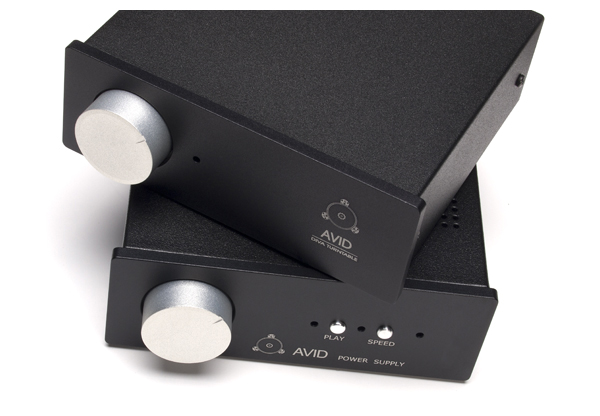 Speaking of Rammstein, both ‘tables are highly resistant to acoustic feedback when blasting “Ich tu dir weh” at high-volume levels. Yes, the AVID decks will satisfy hard-core metalheads in addition to everyone else, regardless of musical taste. This is not a feat aced by all turntables.
Speaking of Rammstein, both ‘tables are highly resistant to acoustic feedback when blasting “Ich tu dir weh” at high-volume levels. Yes, the AVID decks will satisfy hard-core metalheads in addition to everyone else, regardless of musical taste. This is not a feat aced by all turntables.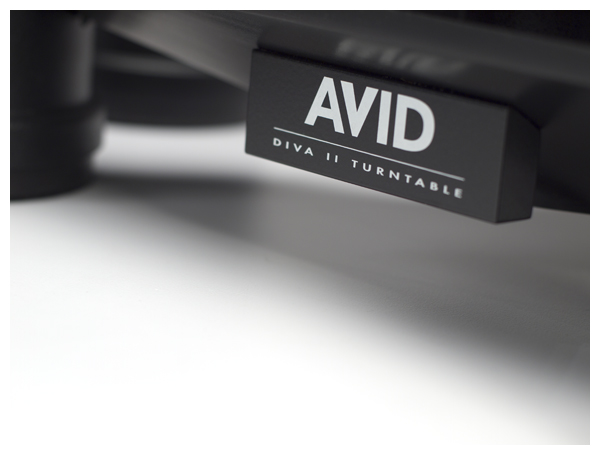 While both ‘tables admirably function with some of my best recordings, the II SP’s higher resolution uncovers more treasure on mediocre, densely packed recordings. The II SP also offers a bigger performance gain when paired with a premium arm and cartridge. The gap isn’t as vast with a Rega RB 300 arm as it is with the SME 309 or Funk Firm FX•R arm. I concur with Mr. Mas, who feels like the ‘table and arm are critical to an analog playback system, and that one can achieve better overall performance with a great turntable/arm setup and modest cartridge than the other way around.
While both ‘tables admirably function with some of my best recordings, the II SP’s higher resolution uncovers more treasure on mediocre, densely packed recordings. The II SP also offers a bigger performance gain when paired with a premium arm and cartridge. The gap isn’t as vast with a Rega RB 300 arm as it is with the SME 309 or Funk Firm FX•R arm. I concur with Mr. Mas, who feels like the ‘table and arm are critical to an analog playback system, and that one can achieve better overall performance with a great turntable/arm setup and modest cartridge than the other way around.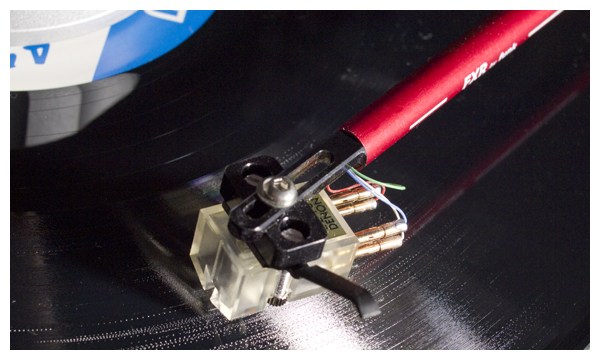 Wow Factor
Wow Factor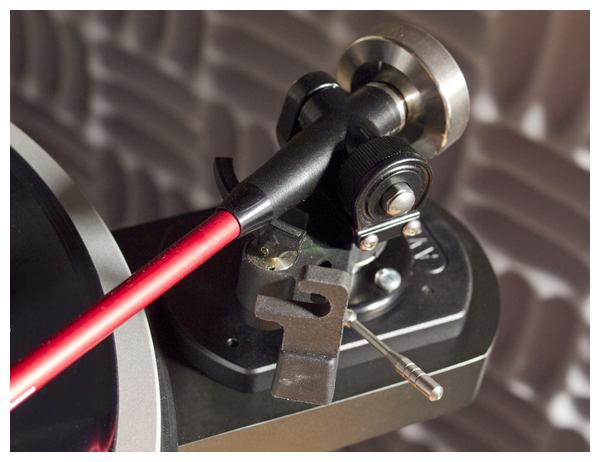 Funk Firm’s “Think of [the FX•R] as a Ford Cosworth or an AMG Mercedes” pitch repeatedly comes to mind during listening sessions. With direct comparisons via MoFi’s recent remasters of James Taylor’s JT and Rod Stewart’s Gasoline Alley, the FX•R always digs deeper into the music, not only painting a bigger sound space but rewarding with more decay and bits of information obscured by the other setup. Isn’t this what it’s all about for maniacal audiophiles?
Funk Firm’s “Think of [the FX•R] as a Ford Cosworth or an AMG Mercedes” pitch repeatedly comes to mind during listening sessions. With direct comparisons via MoFi’s recent remasters of James Taylor’s JT and Rod Stewart’s Gasoline Alley, the FX•R always digs deeper into the music, not only painting a bigger sound space but rewarding with more decay and bits of information obscured by the other setup. Isn’t this what it’s all about for maniacal audiophiles?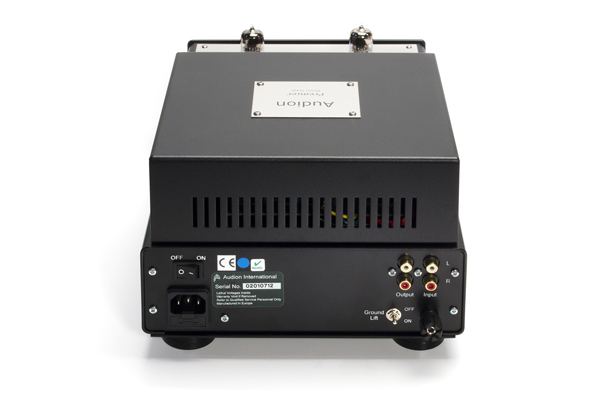 A peek underneath the chassis reveals a tidy printed circuit board, premium parts, and a well-shielded power transformer. Nothing is overdone on this old-school design. An extremely handy back-panel switch lets you float the ground. Hum is the enemy of low-level phono signals, and it’s not uncommon to still have 60hz enter the picture no matter how careful you are with everything else. This little switch brings you back to absolute silence. I wish more manufacturers would include one.
A peek underneath the chassis reveals a tidy printed circuit board, premium parts, and a well-shielded power transformer. Nothing is overdone on this old-school design. An extremely handy back-panel switch lets you float the ground. Hum is the enemy of low-level phono signals, and it’s not uncommon to still have 60hz enter the picture no matter how careful you are with everything else. This little switch brings you back to absolute silence. I wish more manufacturers would include one.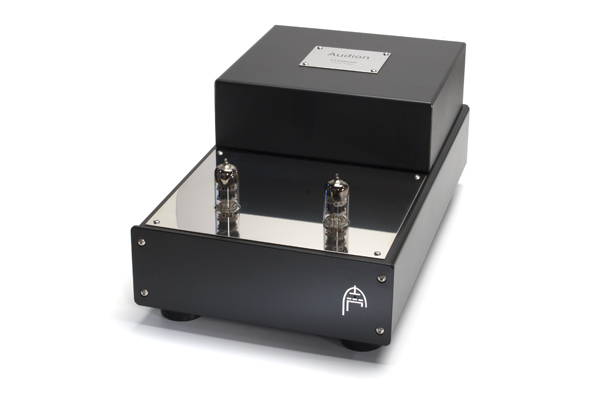 Plenty of Punch
Plenty of Punch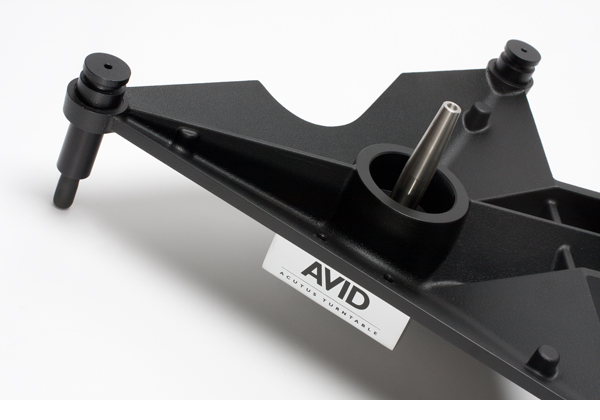 Everything is Jelly
Everything is Jelly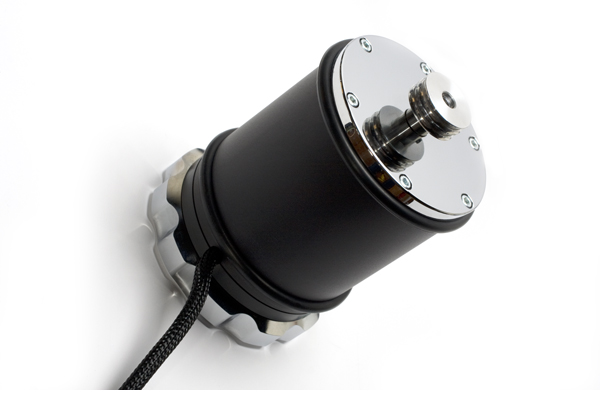 AVID hand-builds the motors in its factory, where they are then hand-tuned to the individual power supply that will be shipped along with the turntable. In the case of the Ref SP, the power supply alone weighs 42 pounds (19kg.) and features a 1KV power transformer. As I unpacked the box, I honestly thought the company made a mistake and shipped me one of its new power amplifiers instead. Tradition aside, the approach works flawlessly. A cursory check of the speed with the Acoustic Sounds test record and digital multimeter revealed perfect accuracy: 1000Hz on the nose.
AVID hand-builds the motors in its factory, where they are then hand-tuned to the individual power supply that will be shipped along with the turntable. In the case of the Ref SP, the power supply alone weighs 42 pounds (19kg.) and features a 1KV power transformer. As I unpacked the box, I honestly thought the company made a mistake and shipped me one of its new power amplifiers instead. Tradition aside, the approach works flawlessly. A cursory check of the speed with the Acoustic Sounds test record and digital multimeter revealed perfect accuracy: 1000Hz on the nose.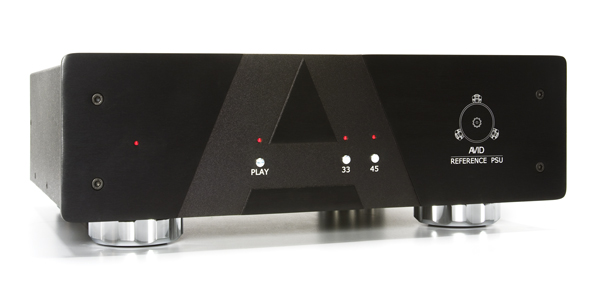 External damping is usually required when using a cartridge with too much compliance in an arm with too much mass, but the AVID’s low suspension frequency and clamping system eliminates the need for its use. “That’s why the SME arms get a bad reputation for wooly bass. Reflected vibration boosts bass and colors the midrange. It’s not the arm at all. And the non-linear damping in the vibration path, making up for the compliance mismatch, kills the high frequencies. Not so with our table.”
External damping is usually required when using a cartridge with too much compliance in an arm with too much mass, but the AVID’s low suspension frequency and clamping system eliminates the need for its use. “That’s why the SME arms get a bad reputation for wooly bass. Reflected vibration boosts bass and colors the midrange. It’s not the arm at all. And the non-linear damping in the vibration path, making up for the compliance mismatch, kills the high frequencies. Not so with our table.”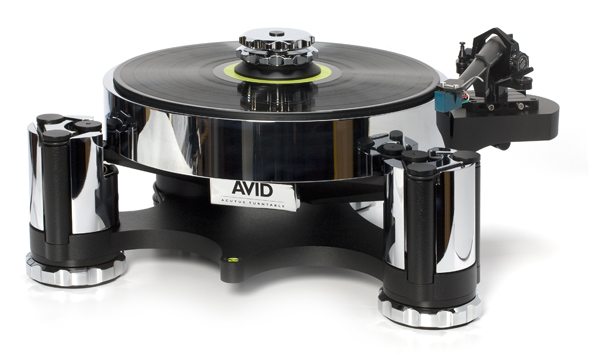 AVID Acutus Reference SP Turntable (tonearm not included)
AVID Acutus Reference SP Turntable (tonearm not included)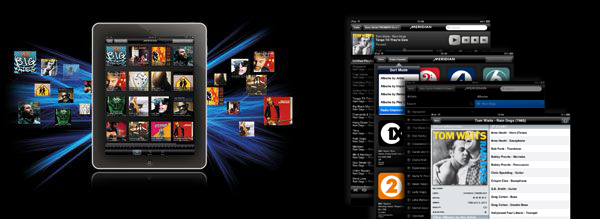 Meridian has just announced that the functionality of their industry leading Sooloos Music Server will soon be available on the iPad. There have been a series of announcements on the web that “something new is coming January 10…”
Meridian has just announced that the functionality of their industry leading Sooloos Music Server will soon be available on the iPad. There have been a series of announcements on the web that “something new is coming January 10…”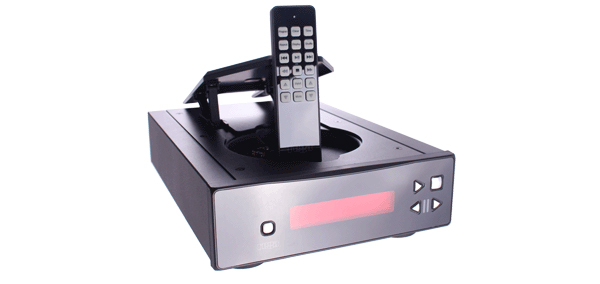 For those wondering if Regas new Brio-R integrated amplifier would have a matching CD player to compliment it’s small size, the answer is yes – and it’s on the way to us for review right now. Available in black or silver to match the Brio-R, the Apollo-R will have a pricetag of $1,095. Featuring the latest Wolfson DAC chipset and a number of improvements over the previous generation, this should prove to be a very interesting player to put through its paces.
For those wondering if Regas new Brio-R integrated amplifier would have a matching CD player to compliment it’s small size, the answer is yes – and it’s on the way to us for review right now. Available in black or silver to match the Brio-R, the Apollo-R will have a pricetag of $1,095. Featuring the latest Wolfson DAC chipset and a number of improvements over the previous generation, this should prove to be a very interesting player to put through its paces.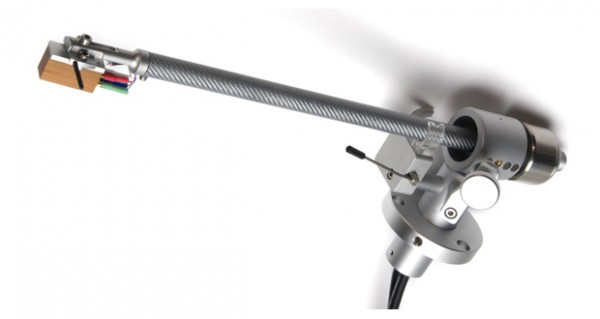
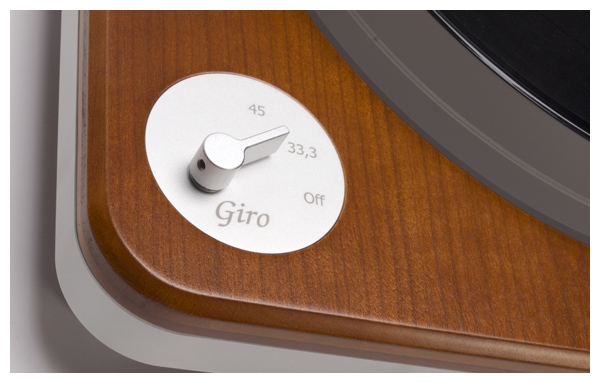 A Music Lovers Turntable
A Music Lovers Turntable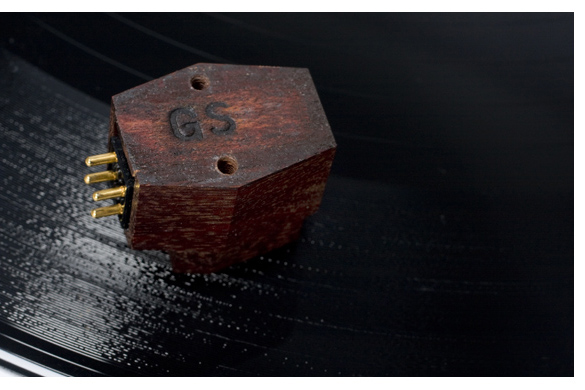 A quantum leap
A quantum leap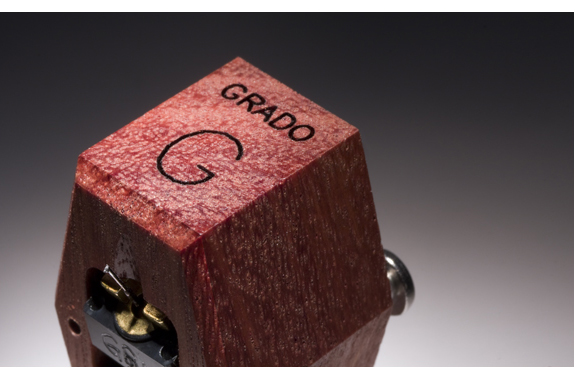 Listening to the differences between the plucky guitar style of Michael Hedges and Alex DeGrassi on their early Windham Hill releases was a treat, with the resonant qualities of their instruments coming through in a more distinct way than I had heard before. The extra dynamic capability of the new model also did well with piano and violin, again keeping the core tonality intact, with decay that faded ever so gently into the blackness.
Listening to the differences between the plucky guitar style of Michael Hedges and Alex DeGrassi on their early Windham Hill releases was a treat, with the resonant qualities of their instruments coming through in a more distinct way than I had heard before. The extra dynamic capability of the new model also did well with piano and violin, again keeping the core tonality intact, with decay that faded ever so gently into the blackness.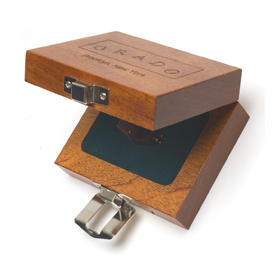 In the end, balance
In the end, balance 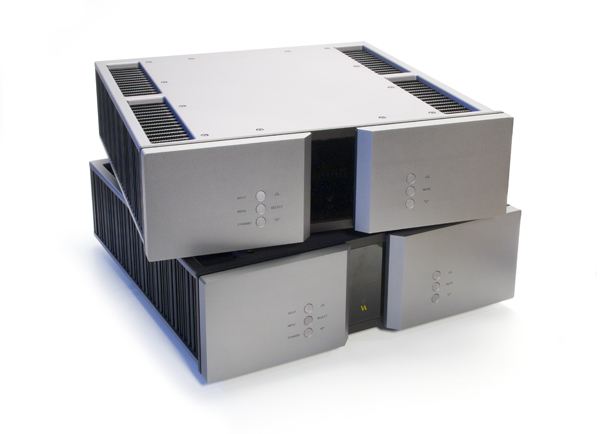 Everything Hans-Ole Vitus makes is heavy. Really fucking heavy. Break-your-back heavy. But those who possess the strength to lift his SM-010 monoblocks out of the boxes will be rewarded with fantastic sound. That said, it’s become very popular of late, at least in the United States, to take shots at the wealthy and, in particular, at luxury goods. So if the idea of a $40k pair of amplifiers seems offensive, let fly the invective and take a pass.
Everything Hans-Ole Vitus makes is heavy. Really fucking heavy. Break-your-back heavy. But those who possess the strength to lift his SM-010 monoblocks out of the boxes will be rewarded with fantastic sound. That said, it’s become very popular of late, at least in the United States, to take shots at the wealthy and, in particular, at luxury goods. So if the idea of a $40k pair of amplifiers seems offensive, let fly the invective and take a pass.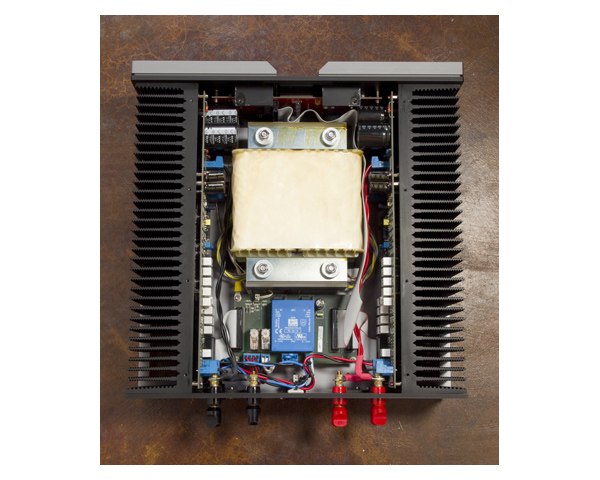 Flick of the Switch
Flick of the Switch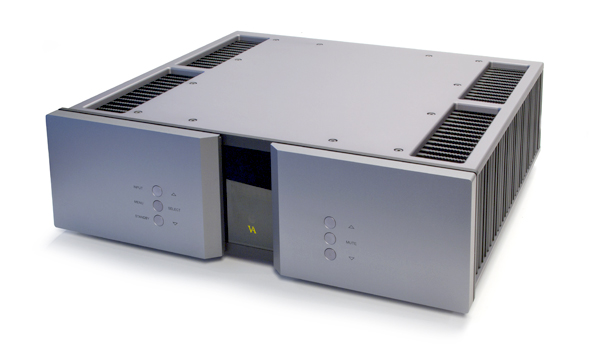 Not Just Another Brick in the Audio Wall
Not Just Another Brick in the Audio Wall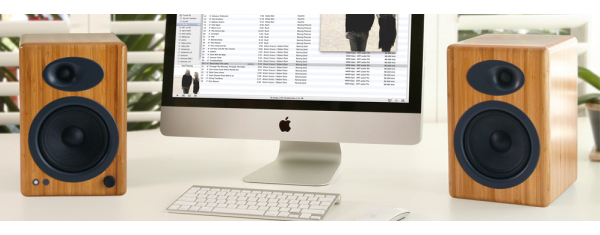 Audioengine 5+ (A5+) Premium Powered Speakers deliver audiophile-quality sound and features at a price that continues to set the standard for affordable high-quality audio. Connect your iDevice, computer, TV, or any other audio component for great stereo sound in any room. The new A5+ incorporates the same award-winning design as the original A5 but includes customer-requested upgrades and features.
Audioengine 5+ (A5+) Premium Powered Speakers deliver audiophile-quality sound and features at a price that continues to set the standard for affordable high-quality audio. Connect your iDevice, computer, TV, or any other audio component for great stereo sound in any room. The new A5+ incorporates the same award-winning design as the original A5 but includes customer-requested upgrades and features.